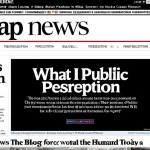Essential Ingredients and Tools for a Traditional English Breakfast
Preparing a traditional English breakfast requires a thoughtful selection of ingredients and the right tools for an authentic experience. The grocery list for English breakfast typically includes eggs, back bacon, sausages, baked beans, mushrooms, tomatoes, and bread. For best results, choose free-range eggs for enhanced flavor and freshness. Opt for thick-cut back bacon with a balance of lean and fat to achieve that classic taste and texture. Sausages should be of good quality, ideally pork-based, with a firm yet juicy consistency.
When selecting baked beans, choose those with a rich tomato sauce that complements the savory elements. Fresh mushrooms and ripe tomatoes add a vital freshness—select firm, unblemished produce. For bread, traditional white or granary sliced bread works well for toasting or frying to golden perfection.
Additional reading : How can you master the art of baking a Victoria sponge cake?
To recreate the full English breakfast, having the correct kitchen tools is essential. A large non-stick frying pan accommodates multiple items simultaneously, while a grill or griddle ensures even cooking and appealing char marks. A spatula and slotted spoon help manage different textures, and a toaster or griddle pan is ideal for the bread. These full English breakfast tools guarantee each element is cooked to perfection and served hot alongside one another.
Step-by-Step Preparation of Each Breakfast Component
Mastering the cooking traditional English breakfast begins with perfecting each element individually. For eggs, the popular styles include fried, scrambled, and poached. Fried eggs require gentle heat to allow whites to set without burning edges, while scrambled eggs benefit from slow cooking and continuous stirring, creating a soft, creamy texture. Poached eggs need fresh water gently simmered with a splash of vinegar for firm whites and runny yolks—timing here is key, usually about 3 minutes.
Have you seen this : How can you prepare a traditional bubble and squeak?
When approaching bacon and sausage, achieving crispness in bacon involves cooking over medium heat, turning regularly to avoid burning yet rendering the fat. Sausages cook best when initially seared in a pan and then finished in the oven, ensuring juiciness inside and a golden brown crust outside.
Cooking beans, mushrooms, and tomatoes requires attention to timing and seasoning. Beans are typically simmered until tender, with a pinch of salt added near the end to avoid toughening the skin. Mushrooms should be sautéed quickly over high heat to retain moisture and flavor, often seasoned with garlic or herbs. Tomatoes benefit from a short roast or pan-fry to enhance sweetness and texture. Each step is essential in assembling the rich layers of an authentic English breakfast.
Traditional Cooking Methods and Expert Tips
Mastering an authentic English breakfast starts with understanding traditional cooking methods. Frying and grilling are the two main techniques, each bringing unique advantages. Frying gives sausages and bacon a crispy, golden finish, enhancing their rich flavours. Conversely, grilling reduces fat content while still delivering a satisfying taste and texture. For the best results, experts recommend frying sausages and bacon on medium heat to maintain juiciness without burning.
Timing is crucial when preparing an English breakfast like a pro. Each component—sausages, eggs, beans, mushrooms, and tomatoes—has different cooking durations. Start with sausages and bacon, as they take longer. Once these are halfway done, add mushrooms and tomatoes to the pan. Eggs should be last to cook, whether fried or scrambled, so they remain fresh and tender.
To avoid common mistakes, do not overcrowd the pan, as this can cause uneven cooking. Additionally, using separate pans for eggs and meat helps maintain optimal textures and prevents flavour mixing. With these English breakfast cooking tips, you can achieve a perfectly balanced, delicious meal every time.
Assembly, Presentation, and Serving Suggestions
When preparing a classic English breakfast plate, arranging components thoughtfully enhances both the visual appeal and practicality. Start by grouping the fried eggs, crispy bacon, sizzling sausages, and golden hash browns evenly across the plate to avoid overcrowding. Including grilled tomatoes and sautéed mushrooms adds colour contrast and nutritional balance, elevating the overall English breakfast presentation.
To keep the meal hot and fresh, serve immediately after cooking, utilizing warmed plates if possible. This technique prevents rapid cooling, preserving optimal taste and texture. For classic serving, pair the breakfast with a strong cup of tea, ideally brewed English-style with milk, which complements the hearty flavours beautifully.
Garnishes and accompaniments can further enhance the experience. Consider offering condiments such as brown sauce, ketchup, or HP sauce, which add tangy depth. Optional extras like baked beans or black pudding are traditional favourites that complete an authentic English breakfast.
Serving with attention to heat, balanced arrangement, and thoughtful garnishes ensures an inviting and delicious meal that honours this beloved British tradition.
Mastering the Art: Additional Insights and Variations
Mastering English breakfast involves embracing the rich world of English breakfast variations that cater to personal taste and regional influences. While the classic plate includes eggs, bacon, sausages, baked beans, mushrooms, and toast, some areas may add black pudding, tomatoes, or hash browns, reflecting local preferences.
Perfecting English breakfast requires experimenting with cooking techniques and ingredient quality. For example, achieving crispy yet tender bacon or perfectly golden sausages can elevate your experience. Using fresh eggs and proper seasoning ensures a balanced flavor profile.
Troubleshooting common problems like soggy beans or unevenly cooked eggs is essential. One expert solution is to warm baked beans separately before plating, preventing the toast from becoming soggy. For eggs, try cooking them at low heat or use gentle poaching methods for desired texture.
To deepen your culinary skills in mastering English breakfast, explore video guides and illustrated recipes, which offer step-by-step visuals for preparation. These resources help clarify timing, presentation, and ingredient combinations, supporting your journey to the perfect English breakfast.





